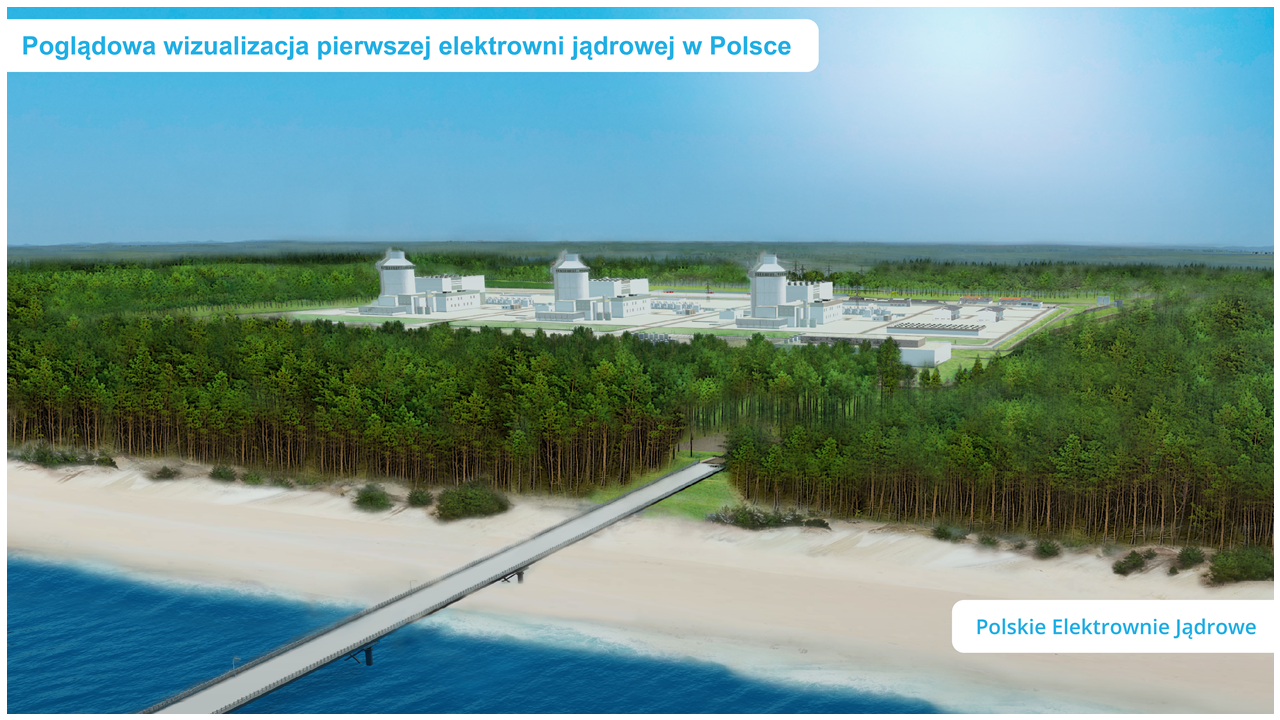Every highway needs multiple lanes to travel quickly and safely. It is no different with the energy mix, which can be based on renewable energy sources, but needs to be supported with nuclear power. Without diversification, there is no energy security – writes Jędrzej Stachura, editor at BiznesAlert.pl.
Russia’s invasion of Ukraine has been going on for almost a year and a half and there is no end in sight. The West has snapped out of the dream to do great business with Vladimir Putin and is seeking to cut off Russian raw materials. A strong example of how the West’s attitude towards the Kremlin has changed over the past few months is Moldova and its dependence on Russian gas. On February 24, 2022, the day the invasion began, 100 percent of the gas for the needs of Moldovans came from this direction. Today, as they say, they are happy to be free of it. Cutting off the umbilical cord connecting them to Russia, which already has enormous influence in Transnistria, strengthens their energy security and resilience to Russian manipulation.
Cutting off Russia, until recently the largest gas exporter to Europe, is forcing Putin’s former contractors to seek raw materials elsewhere and invest in their own energy sources. Limited access to gas and oil, as well as increasingly expensive extraction and high carbon emissions, encourage European countries to invest in renewable energy sources, which are supposed to be the future of their energy mix.
Diversification is worth the candle
Energy security, which at the time of Russian aggression is not an obvious thing, is not only about protecting critical infrastructure, but above all diversifying energy sources, and this is where we should start. In recent years, Poland has been investing heavily in renewables. According to the Energy Market Agency, in April 2023, the installed capacity of renewable energy sources increased by 5.1 GW year-on-year and reached a total of 24.4 GW. This represents nearly 40 percent of the total installed capacity of all electricity sources in Poland. Photovoltaics remains the largest source of renewable energy, followed by onshore wind. The progress Poland has made regarding RES can be easily illustrated by the following statistics – only in the first four months of this year more than 60,000 new installations were added. In addition, in the coming years, Poland’s PGE and Denmark’s Ørsted will build offshore wind farms in the Baltic Sea.
Renewables will be supported with nuclear energy, increasingly prominent in the plans in countries including Poland, Czech Republic or Slovakia. These are two different types of sources, but they can coexist well in a mix, and what’s more, this coexistence will affect Poland’s energy security. Both have the support of the public. Studies show that more than 80 percent of Poles support the construction of nuclear power plants, and the number of panels and windmills installed near households testifies to the popularity of RES.
„With technological progress, new nuclear power plants are becoming more flexible and have the ability to change their load relatively dynamically, which does not change the fact that, in principle, their role in the electricity system should be all about baseload, which is due to both economic and technological reasons,” says the Government Plenipotentiary for Strategic Energy Infrastructure Anna Łukaszewska-Trzeciakowska. „Due to the level of exploitation of Polish coal-fired power plants, which served as the baseload of the Polish electricity system for decades, today we focus on zero-emission and proven nuclear technologies and renewable energy sources. We need to focus on the implementation of a wide range of zero – emission technologies in the Polish energy mix, which means the use of all available renewable energy sources and, what is extremely important, integrated energy storage facilities,” says Łukaszewska-Trzeciakowska.
„The development of these technologies will translate into a reduction in emissions from the energy sector, which will achieve ambitious climate goals in this area, will support our economy by, among others, creating new jobs in line with the principles of a just transition, while guaranteeing the energy independence of our country,” she stressed.
Atom is the basis
Nuclear power plants, similarly to wind and photovoltaic farms, have their advantages and disadvantages, but the former are much more. Examples of countries such as South Korea, the United States and Sweden show that the atom and RES can be pillars of the energy mix, and at the same time they are safe and provide clean energy. Concerns about renewable sources arise when we look at the issue of their stability. Unlike nuclear power, they depend on weather and geography. Taking into account the turmoil related to legal issues and the distance act, onshore wind power is losing in Poland to the one at sea. The Baltic Sea is an ideal place for the construction of offshore wind farms, it has high winds (on average above 9 m/s) and is relatively shallow (on average 52.3 m), which reduces the cost of construction. Wind turbines are distributed energy, so it is difficult for several dozen turbines to fail simultaneously and it is easier to ensure the continuity of electricity supply. If we look at offshore farms and the issue of their safety, doubts arise after last year’s explosions on the Nord Stream 1 and 2 gas pipelines or the collision of a ship with a turbine in the North Sea.
Opponents of a large atom often raise the issue of the cost of construction, which is indeed high. The first nuclear power plant in Poland, which comprise three reactors from Westinghouse in Pomerania, could cost more than 100 billion zlotys. However, this should be treated as an investment in the future, as in the coming years, operating costs, cheap, clean energy and a high level of security will compensate for this expense. It is safety that seems to be the greatest asset of nuclear power, which is protected by international law and is subject to constant supervision by the International Atomic Energy Agency (IAEA). Here, even taking into account the madness of Vladimir Putin and his zeal, it is difficult to expect a threat from Russia. This is also evidenced by the fact that the Zaporozhye Nuclear Power Plant, located in the heart of the fighting in Ukraine, despite numerous incidents on the ground, has not been destroyed for more than a year. Even the Russians know that this would end in an international scandal and serious decisions by the West.
Another issue is the supply of uranium and nuclear fuel. If we look at the possibilities of extracting uranium needed for the operation of a nuclear power plant, Poland has potential in this regard, but the changes in the system, the abandonment of the construction of the nuclear power plant in Żarnowiec and the concept of moving away from the search for mineral deposits from public funds, contributed to the halt of exploration in the 1990s. Currently, the idea of creating a joint services center in Kraków is being born in Poland, which is supposed to promote its own mining in Central and Eastern Europe. The power plant in Pomerania can be supplied, for example, from the Westinghouse nuclear fuel plant in Västerås, Sweden.
Data from 2021 cited by BiznesAlert.pl show that the largest producers of uranium are not Russians, but Kazakhstan, Namibia and Canada. Uzbekistan and Australia are also among the largest. Russia, contrary to the popular belief about its leadership in the production of uranium, ranks only behind the above. Canadian company Cameco, co-owner of Westinghouse, a future supplier of reactor technology in Pomerania, mines uranium in Kazakhstan, the United States and Canada. Moreover, the French and the above-mentioned Americans have great opportunities in the field of uranium enrichment and conversion. The latter are currently drafting a law to limit imports of Russian uranium for the needs of the US nuclear sector and are promoting their own nuclear fuel to replace Russian in the Czech Republic and Ukraine.
Thus, atomic power and RES will work together as a duo to account for 74 percent of the coverage of energy demand in Poland in 2040, according to the update of Poland’s Energy Policy to 2040. That is, provided they develop as quickly as possible. The government has made the decision-in-principle on the construction of a nuclear power plant in Pomerania. Now it’s time for the next decisions that will lead to digging a shovel into the ground in 2026.









